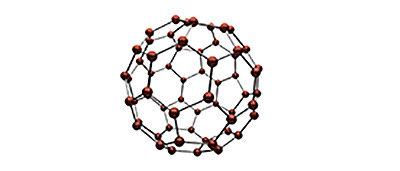Ingredient Profile: Salicylic Acid

Nobody likes breakouts. Whether your skin sporadically erupts in some kind of bump or is covered with blackheads, the objective is always the same: to get rid of them!
The key to doing this is to know your active ingredients. The skincare market is flooded with products designed to counteract clogged pores, remove excess oil, and to clear blemishes. The massive selection of products can be overwhelming, especially if you don’t know which ingredients to look for and which ones to avoid. Once you know what to look for, however, you can quickly narrow down your options and start using formulas that actually work.
What is Salicylic Acid?
Salicylic acid is the only beta-hydroxy acid used in skincare. Although it fulfills the same purpose as alpha-hydroxy acids (such as lactic acid and glycolic acid), it is used in a much weaker concentration. Acne products that are made up alpha-hydroxy acid require up to 30% of the ingredient for it to serve its purpose. Salicylic acid, on the other hand, does its job so well that only 2% is needed for it to achieve the same effect.
Superior to benzoyl peroxide due to its more gentle, less drying nature, salicylic acid is one of the safest and most effective ingredients used to treat acne, oily skin, and post-inflammatory hyperpigmentation (dark spots). It works as a keratolytic agent, meaning it helps rid skin of the dead cells that can contribute to clogged pores.
Topically applying salicylic acid actually has a similar effect to scrubbing your face. Most if not all of the benefits associated with scrubbing are also generated from salicylic acid. What makes salicylic acid so special, however, is that its application does carry the risk of rupturing pores or breaking blood vessels (as scrubbing often does).
Salicylic acid’s main function is to gently remove dead skin particles and open up our pores. When applied to the skin, salicylic acid breaks down fatty compounds (such as built-up oil) that clog pores. This, however, is just one of the many things that this active ingredient can do.
Salicylic acid also increases cell turnover, which makes the skin grow faster, stimulates collagen production, which lifts and firms the skin, all while helping to correct hyperpigmentation.
Salicylic acid is especially unique in the sense that it is related to aspirin (acetylsalicylic acid). Their chemical similarity gives salicylic acid an advantage over other products to open pores. Like aspirin, salicylic acid can stimulate circulation; particularly, it can stimulate the circulation of oil out of pores.
How Much Salicylic Acid Do You Need?
Salicylic acid’s ultimate success depends on the concentration present in the product. Many acne products list salicylic acid as an active ingredient, but do not contain the right amount of it. This can prevent the product from living up to its true potential - and can even lead to adverse effects.
If you are considering buying a product that contains salicylic acid, one of the most important things to look for is how much of it is actually in the product. Too much salicylic acid can actually burn the skin, and too little won’t open the pores.
For acne treatment, salicylic acid concentrations should range from approximately 0.5%-2%. Psoriasis treatments may contain up to 3% concentrations, although this is likely too strong to be used for facial acne. Only products indicated for the treatment of warts should contain more than 3% salicylic acid - these should NEVER be used on delicate facial skin.
Don’t be fooled by face washes containing salicylic acid - since they are rinsed off so quickly, they won’t usually have any noticeable effect.
Salicylic acid included in powders are not at the right pH and therefore will not treat your skin either. Salicylic acid in the form of a gel or cream that actually stays on your skin is the only form of acne treatment that will actually do what it is intended to do.
Like any product, however, proper use is necessary. It is very important to use salicylic acid gels as directed, and to not keep it on your skin for longer than indicated on the packaging. It is also important to note that, although considered gentle, salicylic acid is NOT intended to be used around the eyes.
In Oral Supplements
When taken orally, salicylic acid has also been shown to relieve inflammation and pain. Some oral supplements contain white willow bark extract, a natural source of salicin, from which salicylic acid is derived. Salicin is also a beta-hydroxy acid and has the same exfoliating, anti-inflammatory, and anti-fungal properties as salicylic acid, making it another natural agent used to fight acne and relieve pain!
Although it is generally taken orally, white willow bark works in a very similar way to topical salicylic acid remedies. It exfoliates the skin by boosting cell turnover rates, paving the way for fresh skin renewal.
Conclusions
If you’re looking to treat acne of any severity level, products containing salicylic acid can be an excellent choice. Be sure to look for gels or creams containing the proper concentration of this active ingredient (or supplements containing white willow bark), and always follow the directions properly, in order to achieve clearer, healthier skin.
 Nobody likes breakouts. Whether your skin sporadically erupts in some kind of bump or is covered with blackheads, the objective is always the same: to get rid of them!
Nobody likes breakouts. Whether your skin sporadically erupts in some kind of bump or is covered with blackheads, the objective is always the same: to get rid of them!